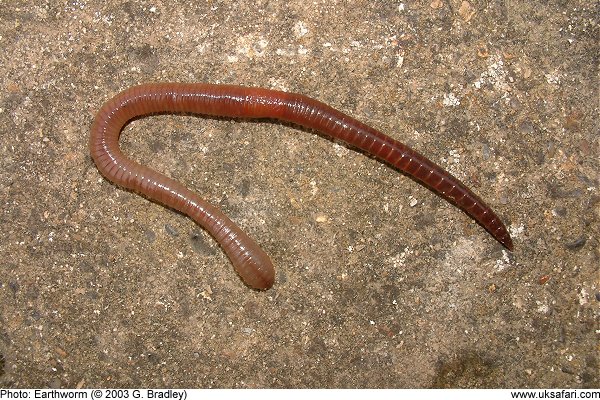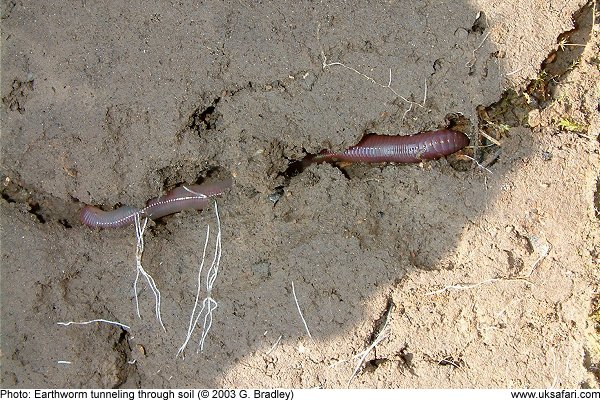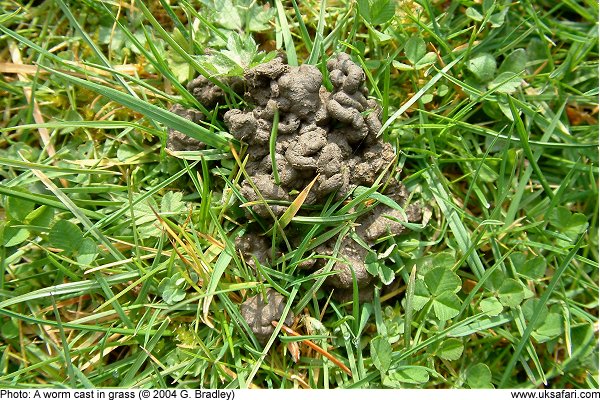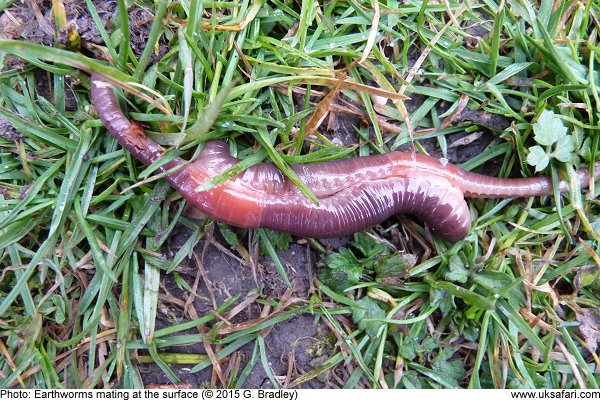 Quick Facts
Quick Facts
Scientific name: Lumbricus sp.
Size: Grows to 15cm long. Some other species of earthworm can grow to 30cm long
Distribution: Found throughout the UK
Months seen: All year round
Life span: Up to 6 years
Habitat: Burrows into soil. Usually found in the top 30cm, but can burrow as deep as 250cm
Food: Feeds on organic matter in soil and rotting vegetation
Special features: The reddish coloured worm in the photo here is just one of 25 different species of worm found in the UK.
The worms head is at the pointed end. Worms do not have any eyes, although they are able to sense light along their whole body.
As they munch their way through soil they create long tunnels, performing a vital task of aerating the soil and allowing water to enter. Earthworms recycle many of the leaves which fall from trees each autumn. At night, they come to the surface, grab a fallen leaf, and drag it back down their tunnel to feed on. The waste soil which passes through the worm can often be found at the surface in little piles known as 'worm casts'.
Each section of the worms body, except the first and last, is equipped with bristles which help it to gain a grip on the soil so it can move backwards and forwards through the soil.
Most earthworms mate underground, except our largest species, Lumbricus terrestris, which mates on the surface in damp conditions, usually at night. All worms are equipped with both male and female reproductive organs, however each worm needs to mate with another worm in order to cross-fertilize. They do this by pressing their bodies against each other and exchanging sperm.
After they separate, that pale coloured band along the body, known as a 'clitellum' produces a ring around the worm - a bit like a band around a cigar. The worm then slides out of the ring, and as it does so, it passes over its own eggs which stick to it. As it continues the eggs pass over the sperm from the other worm and get fertilised. When the ring drops off it closes at both ends and becomes a cocoon for the developing eggs.
 Related Pages
Related Pages

 Popular Pages
Popular Pages
Amphibians, Bats, Badgers, Beetles, Birds, Birds of Prey, Bumble Bees, Butterflies, Caterpillars, Creepy-Crawlies, Deadly Spiders, Dolphins, Dragonflies, E-Postcards, False Widow Spiders, Free Newsletter, Frogs, Fungi, Garden Spiders, Glow-Worms, Grey Squirrels, Hedgehogs, House Spiders, Ladybirds, Mammals, Marine Mammals, Moths, Owls, Reptiles, Spiders, Toads, Trees, Wildlife Hospitals
Copyright © 2020 G. Bradley UK Safari. All rights reserved | About Us | Links | Contributors


 Earthworms
Earthworms





